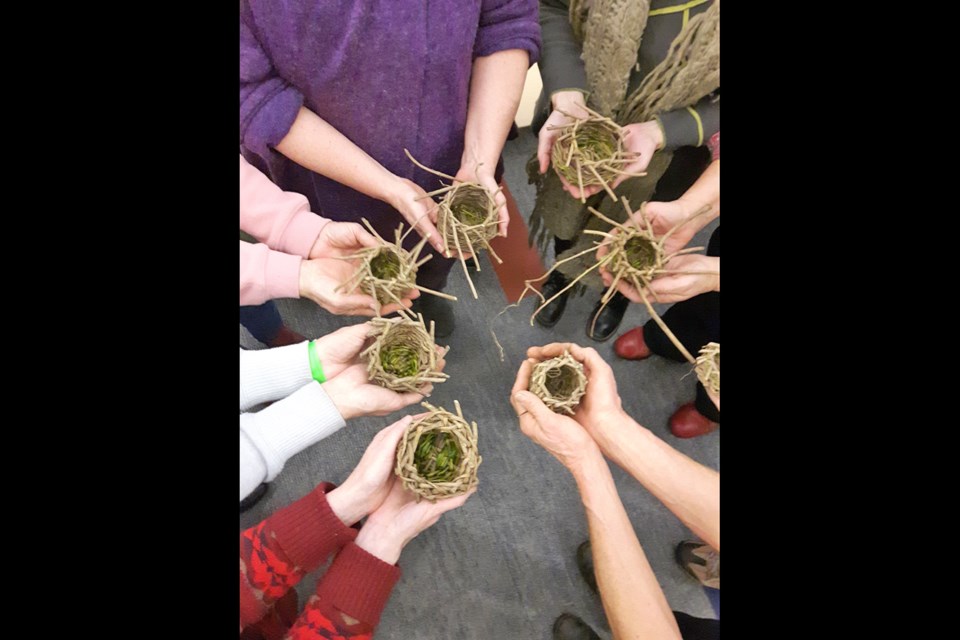I recently had the good fortune to partake in a basket making workshop.
I am a bit of a basket freak. I have baskets from around the world of all sizes and shapes.
I use them for storage, transport, harvesting, decoration and holding fruits as they ripen on the counter.
The workshop I participated in is a perfect fit for garden enthusiasts: weaving useful baskets from invasive plants. What a great combination!
I have probably spent thousands of hours pulling, digging, cutting and disposing of ivy. It is hard work, but when you see the results of a forest being liberated from this pest, and see how quickly the native plants recover, it makes the effort worthwhile.
This week I got some creative payback from the dreaded English Ivy (Hedera Helix).
The workshop I attended was hosted by the North Vancouver City Library and EartHand Gleaners Society. We arrived to find our materials already harvested and prepared for us, so all we had to do was listen and watch carefully to learn how to make a basket from ivy. We all completed a basket in two hours.
To prepare the ivy for weaving, the leaves are stripped off and the stems are coiled to dry.
When it is time to start weaving the stems are soaked to make them pliable again.
The stems can be peeled and or split when fresh to make a finer material if desired, but for our beginner projects we wove with the entire stems.
EartHand Gleaners has a great website listing all their workshops as well as very informative video resources at earthand.com.
Some other materials that are used for weaving are the skins of Himalayan blackberry stems, flag iris, flax, nettle, salmon skin, willow stems, tree bark and scraps of Abeego food wrap.
My imagination runs wild when I think of weaving with invasive plants.
How great would it be to get everyone with time on their hands to learn the process of basket making from start to finish?
Harvesting the ivy from our parks (where it rapidly takes over the native habitat), working as a team, getting exercise and being outside in the forest is a very therapeutic activity for people with many different abilities and challenges.
(There are already organized ivy pulling events in all three municipalities on the North Shore.)
The next process, which is stripping leaves and making coils, would be a gentle activity for people who may have mobility issues, and want to be active and engaged.
Finally, making useful baskets could be enjoyed by all ages and abilities.
We have unlimited resources here on the North Shore – forests covered in ivy can be found in all three municipalities.
Please check out EartHand Gleaners’ website, and in particular, “Artistic Reclamation” in Stanley Park where you can learn about up-purposing invasive plants for use in stewardship projects.
Heather Schamehorn is a certified residential landscape designer, educator, sustainability advocate and acupressure therapist. Contact via www.perennialpleasures.ca



